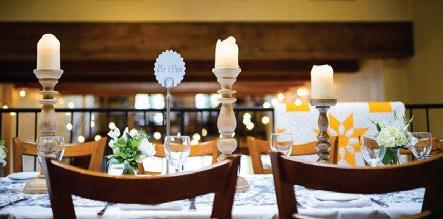
4 minute read
Vibrant Voyagers
Apricots
When traveling, there is a mutually influencing phenomenon that occurs, often unknown at the time, but widely impacting in years to come. The voyager brings to the locals as much as he/she takes away. The apricot, our short-lived summer gift, is perhaps the greatest example of this exchange, as it brings its cultural past to bear fruit in our soil after a journey of centuries.
The native background of the apricot is assumed to be Chinese, yet its true origin remains a mystery. One thing is certain; this relative of the peach has had a unique cultural journey. Finding its way to Armenia along the Silk Road, it is often thought to be native to Eastern Europe. Later, Roman General Lucullus is thought to have brought the fruit west, where it was introduced to Greece by Alexander the Great. Today, the apricot has spread to all parts of the globe, wherever climates will support it.
Its appearance in Spanish missions along the Californian coast in the late 18th century marked the fruit’s official, first recorded presence in the United States. Since then, these seedlings have become a large part of American fruit production. Apricots in the United States are grown primarily in the sunny orchards of California, which provide the perfect climate for their cultivation. Today, the United States joins Turkey, Italy and France as the leading producers of apricots around the world.
Like any traveler, the apricot brings tales to accompany its cul- tural past. Its famously short harvesting season has given rise to the common Egyptian Arabic expression “in apricot season,” generally uttered in response to an unlikely prediction. In early history, laetrile, a chemical found in apricot seeds, was thought to be a treatment for tumors and ulcers (a belief later proven false), and traditional Chinese medicine considered apricots helpful in regenerating bodily fluids, detoxifying the body, and quenching thirst.

But north or south, east or west, there’s no denying that this fruit has provided us with a myriad of nutrients for our health. The apricot is rich in a wide variety of carotenoids and antioxidants that help prevent heart disease and reduce cholesterol levels. The vibrantly hued fruits are full of healthboosting betacarotene, fiber, potassium, and Vitamins A and C.
The sight of the small golden fruit, the feel of its velvety skin and flesh and the taste of its smooth and sweet juice are among the first signs of summer. Because their peak season is short, between May and August, take advantage of fresh, in-season apricots as much as possible. Use them in chicken or vegetable stews to create a unique Middle Eastern flavor, or slice them into hot and cold cereal, green salad and whole grain pancake batter for a tangy twist to your everyday meals. Its apricot season now, so take this time to enjoy this well-cultured fruit, the succulent flavor and natural health benefits it has come to bring us. —Megan Lucero

Builder by day… Chef by night
Scott Wallace has the winning combo

by rAymond bLoom
The day job for Scott Wallace is building luxury homes for his company Montecito Custom Homes (MCH) here in Santa Barbara. He’s been doing that for the past 20 years and is regarded by many in his industry as a leader in that trade. He regards himself as a perfection visionary that sees how the end design will really be used. Wallace has designed and built countless gourmet kitchens for his clients, and while doing that he has, most likely by pure hands on experience, developed an ever-stronger passion for how those kitchens are used. Indeed, when the hard hat comes off at the end of the day and the construction tools are put away, Wallace dons a chef coat, sharpens his knives and starts creating other works of art…great tasting food. So creative and delectable are his dishes that one of them, the Cuban Cowboy Burger, earned him top honors at the Bud and Burgers competition staged by Anheuser-Busch at this year’s Stage Coach Music Festival in Indio, CA. With the victory, Wallace will now advance to St. Louis Mo., to compete in the Bud & Burger finals and a chance to win $100,000 and earn the title as America’s Best Amateur Burger Chef.
“Cooking and creating great recipes is my stress relief,” says Wallace.” “It’s so rewarding to make great meals from scratch and then blow it out on a big dinner party for friends and family. People close to me have always said they like my cooking. I guess my going to St. Louis confirms they weren’t just being polite.”
The Cowboy Cuban is constructed with both pork and veal for the main patty, but the addition of apple wood smoked ham, pepper jack chees and other spices gives it that special paring to draught beer, especially Budweiser. “My grandmother was a great cook and her influence guides my passion for making all my recipes truly unique.”
The format for the finals in St. Louis will feature Wallace and nine other finalists from all over the country. Of that 10, the top three will be selected by public vote. The Three finalist will then be judged by a panel of three professionals, one of which is world renowned Chef David Chang. The champion will automatically be entered into another competition called Burgers of the USA (working title) hosted by Budweiser and aired on Esquire channel.

As for the day job, Wallace says that after surviving the economic down turn he is now well established in the Santa Barbara community and prepared to grow MCH. “What I really enjoy is watching each project come together through unity and synergy of all involved. In addition, I love to see the final product and then cook my client(s) a fine meal after a job well done.“ As for the night job, Wallace says there are some catering plans when time permits and of course more cooking competitions. Best of luck in St. Louis!









